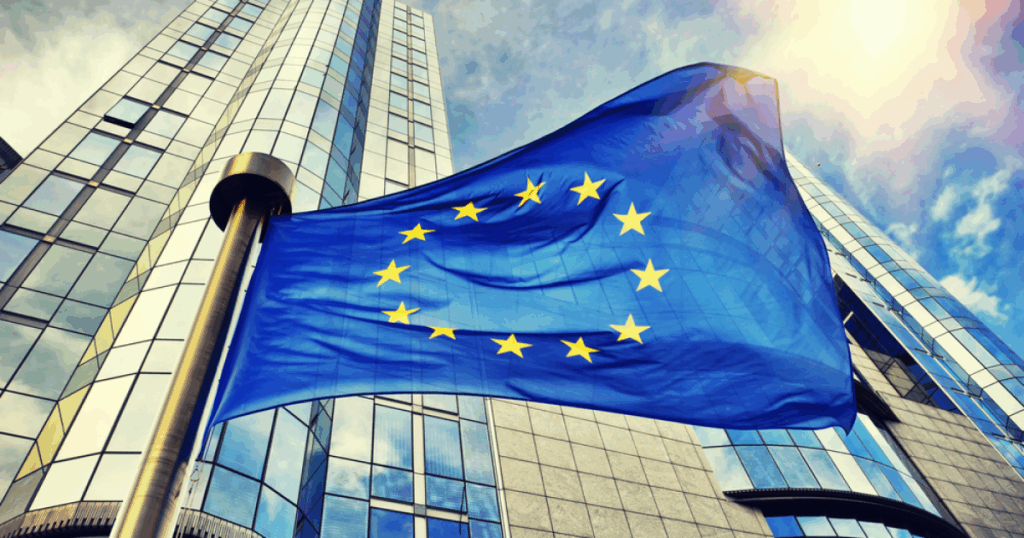EU Council Approves Simplification of Carbon Border Adjustment Mechanism

- New rules ease compliance for EU importers while maintaining climate coverage of 99% of embedded emissions.
- A 50-tonne de minimis threshold exempts most SMEs and small importers from CBAM obligations.
- Regulation includes procedural reforms to streamline registration, emissions calculation, and penalties ahead of full implementation in 2026.
Brussels signs off on CBAM reform
The Council of the European Union has adopted a regulation simplifying the bloc’s carbon border adjustment mechanism (CBAM), an instrument designed to prevent carbon leakage by imposing a levy on imported goods based on their embedded emissions.
Part of the Omnibus I legislative package, the reform seeks to reduce compliance costs and regulatory complexity, especially for small and medium-sized enterprises (SMEs), without diluting the mechanism’s climate ambition. EU officials said the revisions keep coverage of embedded emissions steady at roughly 99%.
“If we want to succeed with the green transition and boost Europe’s competitiveness at the same time, we must reduce unnecessary burdens,” said Denmark’s Minister for European Affairs Marie Bjerre. “That’s exactly what this instrument delivers – making life easier for European businesses while maintaining our climate ambitions.”

De minimis threshold for smaller importers
The most notable adjustment is the replacement of the current exemption based on negligible-value imports with a new mass-based threshold. Under the new rule, imports of CBAM-covered goods up to 50 tonnes per importer annually will fall outside the regulation’s scope.
The measure is expected to relieve administrative pressure on SMEs and individuals importing low volumes, while ensuring that large-scale industrial flows remain subject to full CBAM reporting and pricing obligations.
Preventing disruption in 2026 roll-out
The amended regulation also introduces transitional arrangements to avoid disruptions at the start of 2026, when the CBAM enters full operation. Importers awaiting registration will be allowed to bring in covered goods under specific conditions, preventing bottlenecks at EU borders.
This approach reflects concerns raised by industry and customs authorities about potential trade slowdowns during the initial registration period.
Streamlined procedures for compliance
The package introduces a suite of procedural simplifications. These include revisions to the authorisation process for CBAM declarants, clearer rules on data collection and emissions calculation, adjustments to verification requirements, and refinements in how financial liability is assessed.
The regulation also recalibrates penalties and modifies the framework governing indirect customs representatives. These measures aim to reduce the risk of legal uncertainty and cut costs associated with compliance, particularly for firms navigating the system for the first time.
RELATED ARTICLE: EU Council Gives Final Approval to Nature Restoration Law
Policy and investment implications
For policymakers, the reforms are an effort to strike a balance between climate integrity and industrial competitiveness. By maintaining coverage of almost all embedded emissions while carving out exemptions for small-volume imports, the Council is signaling that CBAM remains central to the EU’s decarbonization strategy.
For investors and multinational corporations, the changes provide a clearer regulatory pathway. Streamlined rules reduce the risk of compliance bottlenecks and potential penalties, factors that influence both supply chain planning and capital allocation.
SMEs stand to benefit from reduced exposure to reporting obligations, though firms nearing the 50-tonne threshold will need to evaluate whether to consolidate imports or adjust sourcing practices to remain exempt. Larger importers face no reduction in obligations but may benefit from simplified reporting and verification.
Next steps
The legislative act will be published in the EU’s Official Journal in the coming days and will enter into force three days later. Companies trading in CBAM-covered goods now face a shorter window to align compliance processes with the streamlined framework before the mechanism’s full application in 2026.
As Europe tightens its carbon border regime, the reforms highlight the political challenge of sustaining climate ambition while responding to competitiveness concerns. The coming years will test how effectively the revised CBAM can deter carbon leakage, shape trade flows, and reinforce the EU’s role as a global climate policy standard-setter.
Follow ESG News on LinkedIn








